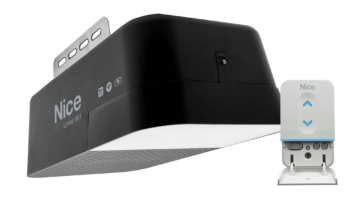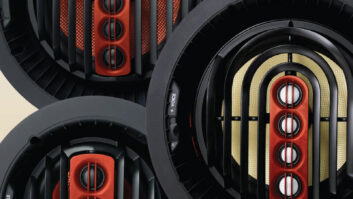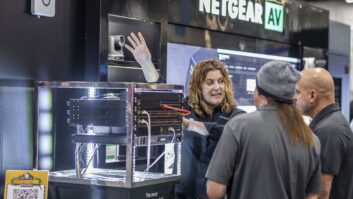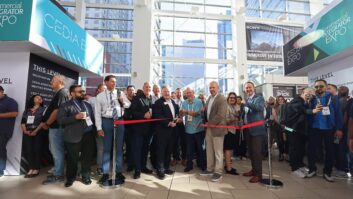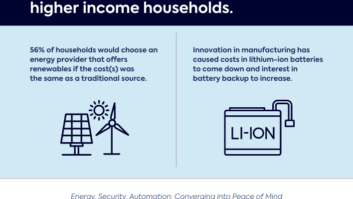Its been coming for the past 10 years. It all started in the mid 1990s with a few convergence products that combined multimedia capabilities with traditional A/V features.
The first milestone product from the PC industry was probably the Gateway Destinations PC back in 1996. Remember it? It was a Pentium 166 MHz with a 2 GB drive, a TV tuner card, wireless mouse and keyboard, a 36-inch CRT monitor and some application-specific software. It came with an optional Harman Kardon Pro Logic receiver and five small speakers plus a subwoofer.
The A/V industry offered up Frox as its first-born child to the brave new world. The product was as a tour de force audio/video processor that handled switching, THX-certified surround sound decoding, video scaling and a really cool all-encompassing on-screen graphical user interface with motion sensitive wireless mouse-like control. Both of these products were real pioneers in their fields, and like many pioneers they ended up with arrows in their backs. But they also paved the way for new trends in our business that are undeniably important.
Ever since that time Ive been observing the evolution of this convergence thing, whereby the lines between a computing and entertainment device are supposed to erode down to nothing. I have, like many of you, been wondering when exactly this would happen. When will mid- to high-end custom home theaters run on these computing devices and only these computing devices? Will we ever get to a point where tangible media, such as DVD discs, go away altogether to be replaced by program material downloaded from online sources?
Will product front panels ever be as blank as the typical computer is today? Will system controls ever be accessed through GUI (graphical user interface) with no actual buttons to push? And finally, will all of the audio and video signals be channeled in direct digital stream form instead of analog wires, connectors and switches?
This year I decided to take a much closer look at this convergent world. First off, I wanted to see if everything we can do in the traditional world of analog sourcing and distribution could also be done in the brave new world of networked everything. This includes the functions of finding the program material, selecting the source device, displaying the device selections and status, setting the sound volume and basic video parameters, feeding signals from any source device to any display device (for sound and picture content), and remotely controlling any device from any location.
Then I wanted to see what more I could get from using networked controls and signal feeds. Is there any better signal control, throughput, operation ease or flexibility in the networking world?
Armed with all of these questions, a healthy dose of curiosity, and as it turns out, a large amount of patience and time, I set out to discover the state-of-the-art in networked media systems. I religiously read Gordon van Zuidens columns in this here fine publication. I purchased a number of convergence devices, including media centers, media players, wireless routers, touchscreen PCs, etc. I loaded servers with media and bought music online. (Being a musician myself, I respect the value of other peoples musical efforts, so I spent money where appropriate…) I asked many, many dumb questions to our ever-patient IT guy.
I walked the halls of the 2005 CES asking more dumb questions, and picked up 30 pounds of literature from the press room and from booths that were showing any type of convergence product. Now I think Im beginning to get some answers.
First of all, what I see is more confrontationa game of chickenthan convergence. Convergence is polite, consensual and planned. The outlook here is chaotic and confusing as heck.
The latest boxing match I witnessed in this confrontation was, in fact, in Las Vegas, and the ring was the halls of the convention center during CES 2005. To my left were the traditional consumer electronics companies. To my right were the traditional PC industry manufacturers. And they werent about to talk to each other nicely.
The PC-centric companies fought for show-goers attention with products such as media centers, media players and storage devices. Most of these offerings were re-dressed computing devices with audio and video sourcing and output facilities. Some were elegantly dressed, granted, but were PCs nevertheless. That means they incorporate complex processors running an operating system, and are usually noisy due to disk drives and fans. Also, they can be prone to lockups and operational errors, just like our everyday business PCs are. Some of the demonstrations I attended even had to be restarted using the obligatory three-fingered salute (control-alt-delete). I also found that some of these PCs would be hard to control in a home theater context, because they required keyboards or a mouse to navigate through titles. With the exception of Windows XP Media Edition, the user interfaces can be clunky, and while adequate for a lean-forward PC user crowd, they just werent imbued with the simplicity demanded by the lean-back crowd. In fact, some of the user interfaces had characters that were too small to resolve on standard TV sets, particularly when viewed at typical video distance (approximately 12 feet). The players in this field included HP, Microsoft, D-Link, Intel, Netgear, LinkSys, Viewsonic, Dell and many, many other really deep-pocketed companies.
A/V-centric companies were fighting their fight by showing ever-larger HDTV displays (yes, even a 102-inch plasma display!), wireless interconnections to speakers and projectors, and by adding computing and networking functions to their products. Some of the players here were Pioneer, Onkyo, Yamaha, Kiss Technology, LG, RCA, etc. The typical trend I spotted was the incorporation of ethernet with IP in TV sets, A/V receivers and DVD players. The most typical application was to browse and play program material, such as pictures or music files, from a storage server. In some cases IP was only used as a signal transfer scheme, and in others the product with ethernet could live on a network along with standard computing devices. The user interfaces were usually simple, easy to read with absolutely no frills.
All in all, however, I cant say that these products reached out too far into the world of system control, automation or digital networking. In many cases it would be just as easy to have a basic PC with A/V output interfaced into the home theater alongside the traditional source devices.
The most promising cases I saw were companies that come from the world of residential system automation and were using their experience to make control systems that incorporate full-fledged A/V function along with IP-based networking. They seem to have the most on the ball. Interesting, no?
Some obvious players in this field are, NetStreams DigiLinx, Control 4 and IMC. These companies are staffed by industry veterans, and they were using ethernet as a cost-effective and universally accepted control and signal path. Some had ways to pull stored data from a central storage server device and push data onto the network from peripheral locations. NetStreams is shipping systems for audio-only right now, but indicated that by years end they will provide some video solutions, too. Control 4 is not yet shipping, but has plans for an extensive collection of A/V controllers, lighting controllers, head-end and output interface boxes, relay controllers, etc, etc. Pretty much anything you could think of doing is in some way offered up at competitive costs. IMC is by the folks at Russound, and is also in final development stages. For now their system is to use IP networking for control commands only.
Will it all work as flawlessly as good old analog switching devices under standard automation control? Not sure really, but I dont want to be the first one to find out, and thats what I hear everyone else saying, too. In our world of custom installations where our clients feel they own our lives because they signed a pretty sizable check, we dont want calls at 11 p.m., because they cant start a movie from a networked scheme with a server thats hung up. Im certainly not one to shy away from new or challenging technologies or to pooh-pooh those who are working to push the envelope, but right now, the best answer I can come up with to all my questions is that the bridge between the PC versatility and the CE usage comfort is still under construction. A few of my customers are willing to deal with the idiosyncrasies of near-screen click-and-drag operations for their home theaters, but most of them just wont put up with it. If they were electronics or software hobbyists, they probably wouldnt call us in the first place.
Also, most of our customer base wants an assurance of performance quality, and Im not sure how consistent current PC devices can really be in that arena. A frightening number of the PC-based demonstrations I saw at CES were abysmal, with soft and noisy pictures, improper widescreen aspect ratio and distorted sound. Networked audio/video and control will all be pretty exciting if you stop and think about it, but its not ready for our side of the business. I say give it another year and lets learn all that we can in the meantime.

